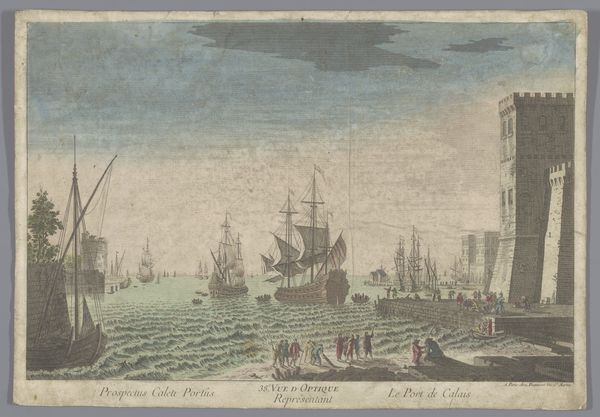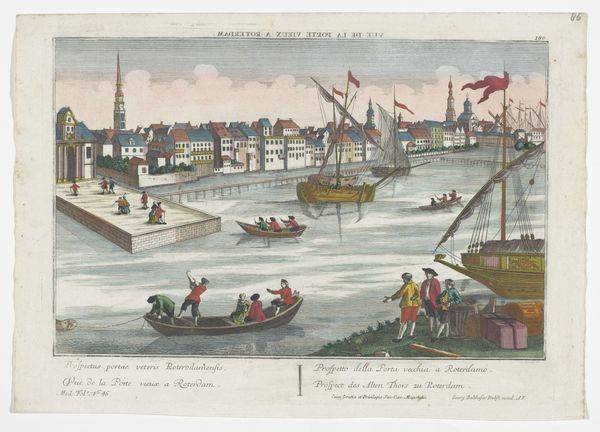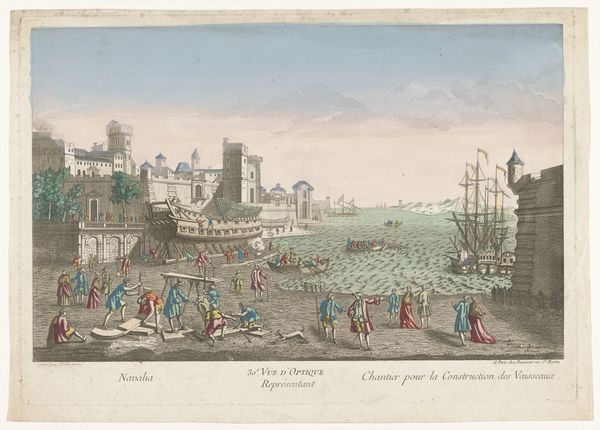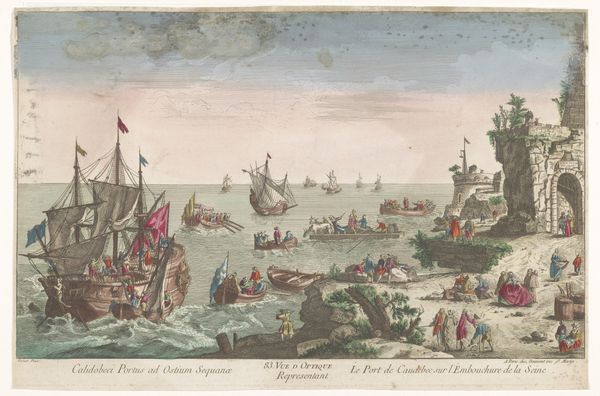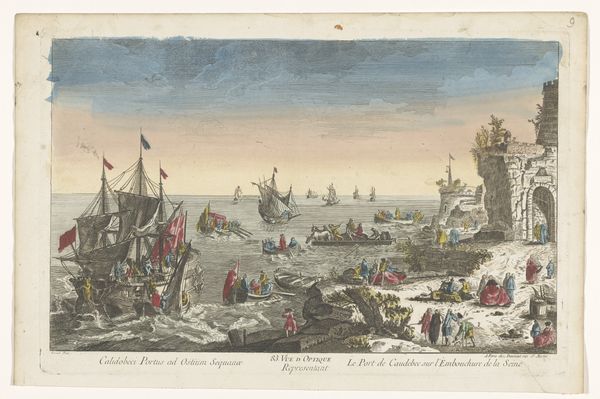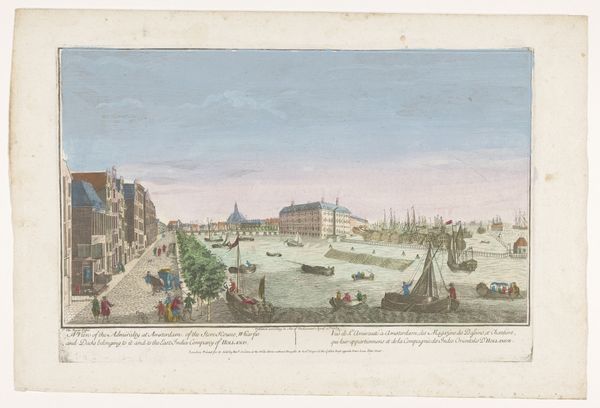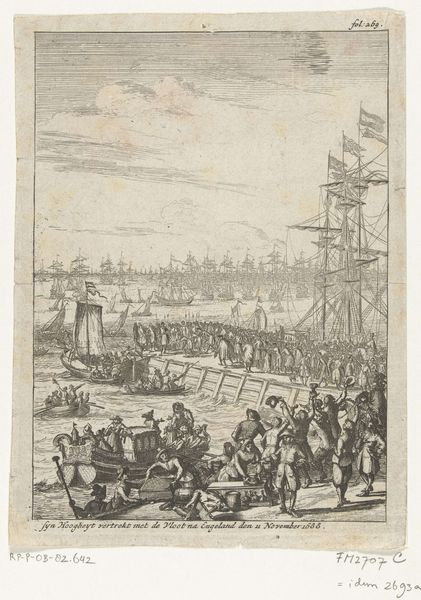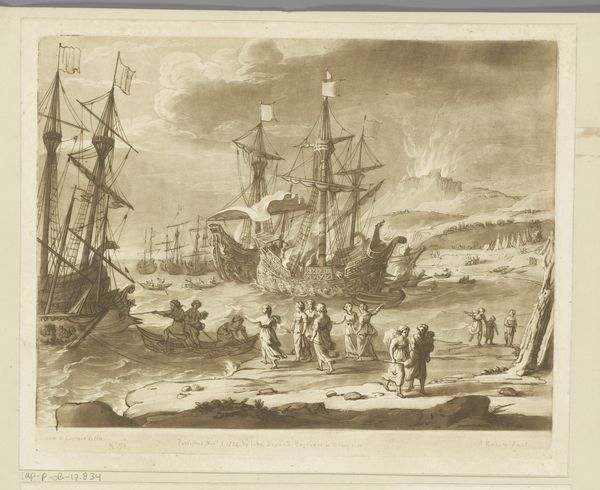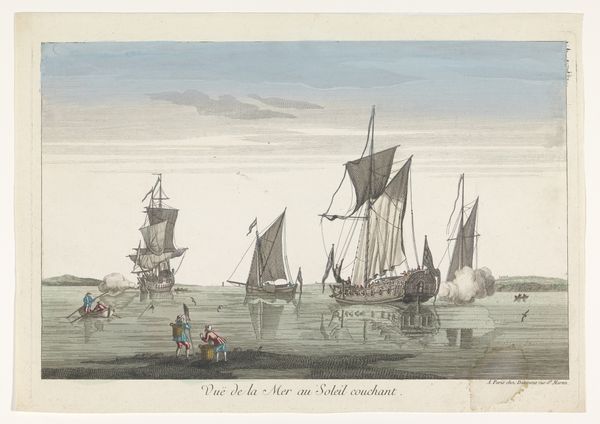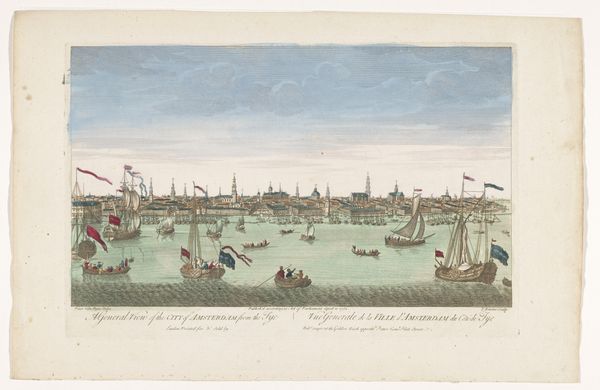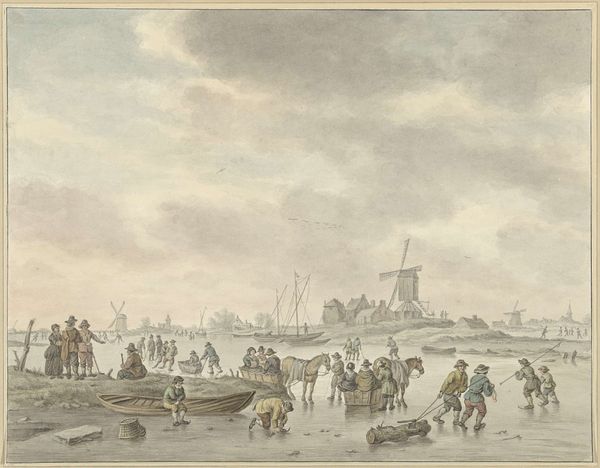
Gezicht op de aankomst van het schip de Dauphin in de haven te Toulon 18th century
0:00
0:00
basset
Rijksmuseum
print, watercolor
#
baroque
# print
#
landscape
#
watercolor
#
watercolour illustration
#
genre-painting
#
history-painting
#
watercolor
Dimensions: height 289 mm, width 431 mm
Copyright: Rijks Museum: Open Domain
Editor: Here we have "Gezicht op de aankomst van het schip de Dauphin in de haven te Toulon," an 18th-century watercolor print housed in the Rijksmuseum. It depicts the arrival of a ship, possibly with some historical significance. It all feels rather staged and prosperous, but something seems amiss given that it's a port scene. What do you see in this piece? Curator: The piece is demonstrably propagandistic, obscuring the human cost of maritime trade. Note the artist's emphasis on commerce, rather than labor, effectively removing those most vulnerable to exploitation in its system, namely, sailors, enslaved people and dock workers, from clear view. Do you notice how neatly everything is arranged, as if to suggest that it represents not lived reality but a sort of ideal? Editor: You're right, it’s almost too orderly for a port. I was initially charmed by the genre aspects, but your point about who’s visible and who’s not makes me uneasy. Curator: It's a calculated elision. Think of it as Baroque-era marketing material, not unlike advertisements today: notice what stories they omit or conveniently "forget" to show. This arrival, and this 'Dauphin', are being presented in a certain light – who benefits from this carefully crafted image and why? Whose interests is it serving? Editor: So, it’s less about the arrival itself and more about the statement it’s making about power and wealth, about France perhaps? The image celebrates something, or someone... Curator: Precisely. The arrival serves as a spectacle, reinforcing notions of national pride, royal legitimacy, and economic power—a projection aimed both inward, at the French populace, and outward, towards other European powers. It’s the performance of dominance through a supposedly ‘neutral’ scene. Editor: That reframes the entire image for me. I will keep those omissions and contexts in mind from now on. Curator: Indeed. We must train our eyes to detect the art of persuasion at play, to unearth the hidden power dynamics woven into seemingly celebratory or decorative imagery.
Comments
No comments
Be the first to comment and join the conversation on the ultimate creative platform.

